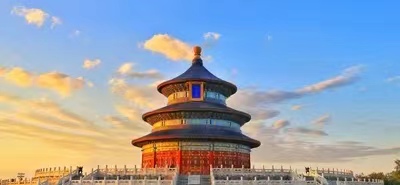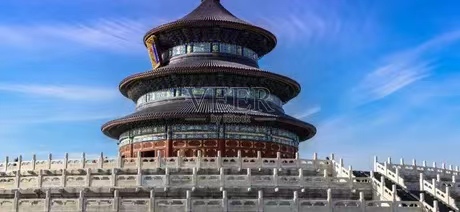A moon cake is a delicately-stuffed round cake that is delicious and nice to look at. The cake is often given as a gift between family and friends during the festival to show greetings. A small cake is a carrier of good wishes between family members, the eagerness to join family reunion of those away from home and people's praying for happiness.
Making and sharing mooncakes is one of the hallmark traditions of this festival. In Chinese culture, a round shape symbolizes completeness and reunion. Thus, the sharing and eating of round mooncakes among family members during the week of the festival signifies the completeness and unity of families. In some areas of China, there is a tradition of making mooncakes during the night of the Mid-Autumn Festival. The senior person in that household would cut the mooncakes into pieces and distribute them to each family member, signifying family reunion. In modern times, however, making mooncakes at home has given way to the more popular custom of giving mooncakes to family members, although the meaning of maintaining familial unity remains.
Although typical mooncakes can be around a few centimetres in diameter, imperial chefs have made some as large as a few metres in radius, with its surface pressed with designs of Chang'e, cassia trees, or the Moon-Palace. One tradition is to pile 13 mooncakes on top of each other to mimic a pagoda, the number 13 being chosen to represent the 13 months in a full lunar year. The spectacle of making very large mooncakes continues in modern China.
According to Chinese folklore, a Turpan businessman offered cakes to Emperor Taizong of Tang in his victory against the Xiongnu on the fifteenth day of the eighth lunar month. Taizong took the round cakes and pointed to the moon with a smile, saying, "I'd like to invite the toad to enjoy the hú (胡) cake." After sharing the cakes with his ministers, the custom of eating these hú cakes spread throughout the country. Eventually these became known as mooncakes. Although the legend explains the beginnings of mooncake-giving, its popularity and ties to the festival began during the Song dynasty (906–1279 CE).
Another popular legend concerns the Han Chinese's uprising against the ruling Mongols at the end of the Yuan dynasty (1280–1368 CE), in which the Han Chinese used traditional mooncakes to conceal the message that they were to rebel on Mid-Autumn Day. Because of strict controls upon Han Chinese families imposed by the Mongols in which only 1 out of every 10 households was allowed to own a knife guarded by a Mongolian guard, this coordinated message was important to gather as many available weapons as possible.



